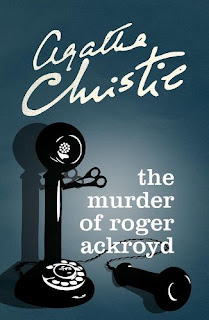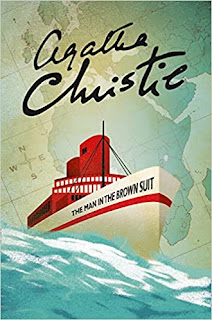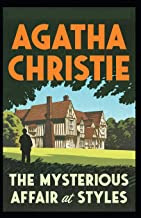Writer’s eighth novel is far from ‘disappointing’
Six years before Agatha Christie’s famous novel,
Murder on the Orient Express, was published, the Queen of Crime wrote another
Hercule Poirot mystery where a murder is committed on a train. 
The cover of the 2015 edition
published by HarperCollins
Unfortunately for the killer, Hercule Poirot happens
to be on the train at the time, travelling from England to the French Riviera
on the famous ‘train bleu.’
The Mystery of the Blue Train, which was published in
1928, is reputed to have been Christie’s least favourite story. Nevertheless,
the book received a positive reaction from the Times Literary Supplement at the
time, who stated that ‘the reader would ‘not be disappointed.’ The distinguished Belgian detective uses
psychological reasoning to dispute the guilt of the original suspect arrested
by the police and, in the words of the review, ‘lands his fish to the surprise
of everyone.’
The murder victim is Ruth Kettering, an unhappily
married American heiress, who is travelling to France to meet her lover. On the
train, she meets Katherine Grey, who for the last ten years has been a companion
to an old lady living in the village of St Mary Mead. The old lady had just died
and left her a substantial inheritance and Katherine is enjoying her first chance
to travel abroad.
The two women have a conversation over lunch and Ruth
invites Katherine back to her compartment, where she confides in her that she
has misgivings about what she is about to do and doesn’t feel happy about
having deceived her own father about her trip.
Katherine does not see Ruth again and that evening finds
herself seated opposite Hercule Poirot for dinner. The next morning, Katherine
discovers that Ruth has been found dead in her compartment, having been
strangled during the night.
Christie's detective Hercule Poirot, as
famously portrayed by David Suchet
It transpires that a famous ruby, ‘Heart of Fire,’
that has recently been given to Ruth by her wealthy father, is now missing.
Later, Poirot is persuaded by Ruth’s father to take on the case and find his
daughter’s murderer for him. The little Belgian detective doubts that the French
police have arrested the right person and, helped by Katherine, uncovers the
truth.
The Mystery of the Blue Train was priced at seven
shillings and sixpence when it first went on sale in the UK.
The novel contained the first ever mention of the
fictional village of St Mary Mead, which was to be the home of another of Agatha
Christie’s detective, Miss Marple.
Agatha Christie is reputed to have found writing the
book an ordeal, as the story did not come easily to her. At that time, she was staying
in the Canary Islands while recovering from the death of her mother, her
husband’s infidelity, and her own mental breakdown. In her autobiography, she stated
that she had always hated the novel.
I particularly enjoyed the parts of the story set in the south of France and found the plot to be ingenious. If, like me, you are a Christie fan, you will find it well worth reading.






.jpg)














